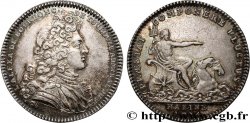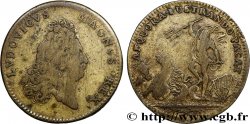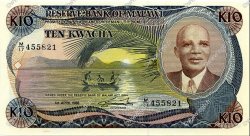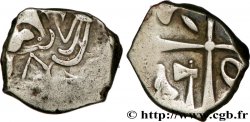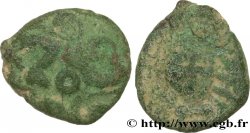Back 1/1
fjt_210661 - NAVY - ROYAL GALLEYS Louis-Alexandre de Bourbon, comte de Toulouse 1706
Not available.
Item sold on our e-shop
Price : 24.00 €
Item sold on our e-shop
Price : 24.00 €
Type : Louis-Alexandre de Bourbon, comte de Toulouse
Date: 1706
Metal : red copper
Diameter : 28,60 mm
Orientation dies : 6 h.
Edge : LISSE
Rarity : R1
Obverse
Obverse legend : L. ALEXA. DE. BOURBON. C. DE. TOULOUZE. ADMIRAL. DE. FCE.
Obverse description : Buste à droite de Louis Alexandre de Bourbon signé H.R.F.
Reverse
Reverse legend : SERVAT MENS CAUTA FUTURI ; À L'EXERGUE : MARINE. 1706.
Reverse description : Protée avec ses phoques.
Commentary
Louis Alexandre de Bourbon, comte de Toulouse (1681), duc de Penthièvre (1697), d’Arc, de Châteauvillain et de Rambouillet (1711), naquit à Versailles le 6 juin 1678 et mourut à Rambouillet le 1er décembre 1737.
Fils naturel de Louis XIV et de Madame de Montespan, il fut légitimé et fait comte de Toulouse en 1681, puis duc de Penthièvre en 1697 et duc de Rambouillet en 1711. Il reçut en 1683, à l’âge de cinq ans, la charge d’amiral de France et fut fait colonel d’un régiment d’infanterie à son nom en février 1684, puis mestre de camp d’un régiment de cavalerie en 1693.
Lors de la guerre de Succession d'Espagne, il fut chargé de défendre la Sicile. En 1704, devant Malaga, il infligea de très lourdes pertes à la flotte anglo-hollandaise commandée par l’amiral George Rooke. Il obtint le gouvernement de Guyenne en janvier 1689, qu’il échangea contre celui de Bretagne en mars 1695.
Fait maréchal de camp le 3 janvier 1696 puis lieutenant général des armées du Roi le 3 août 1697, il obtint la charge de grand veneur de France en mars 1714. Il fut chevalier des Ordres du Roi le 2 février 1693 puis chevalier de la Toison d'or en 1704.
C’était, dit Saint-Simon, « un homme fort court, avec un accueil aussi gracieux qu’un froid naturel, mais glacial, le pouvait permettre ; de la valeur et de l’envie de faire, mais par les bonnes voies, et en qui le sens droit et juste, pour le très ordinaire, suppléait à l’esprit ; fort appliqué d’ailleurs à savoir sa marine de guerre et de commerce et l’entendant très bien. »
En 1706, il acheta à Joseph Fleuriau d'Armenonville le château de Rambouillet. Il agrandit considérablement le domaine et fit procéder à d’importants embellissements du château. Par lettres patentes de mai 1711, le marquisat de Rambouillet fut alors érigé en duché-pairie.
En 1712, il acheta à Louis II Phélypeaux de La Vrillière, l’Hôtel de La Vrillière situé près de la place des Victoires, appelé depuis « Hôtel de Toulouse », et le fit réaménager par l’architecte Robert de Cotte. L’hôtel abrite aujourd’hui la Banque de France.
Louis XV avait pour le comte de Toulouse une grande affection renforcée par leur goût commun pour la chasse. En août 1724, le Roi alla pour la première fois chasser le cerf à Rambouillet où il coucha. Il y retourna dès le mois suivant et prit dès lors l’habitude de s’y rendre très régulièrement.
Tombé en disgrâce, le comte de Toulouse se retira dans son château de Rambouillet où il mourut en 1737 des suites d’une opération. Il est inhumé, ainsi que sa famille, dans la Chapelle royale de Dreux.
Voir sa biograhie complète et son portrait à http://fr.wikipedia.org/wiki/Louis_Alexandre_de_Bourbon.
Louis Alexandre de Bourbon, Count of Toulouse (1681), Duke of Penthièvre (1697), of Arc, of Châteauvillain and of Rambouillet (1711), was born in Versailles on June 6, 1678 and died in Rambouillet on December 1, 1737.
Natural son of Louis XIV and Madame de Montespan, he was legitimized and made Count of Toulouse in 1681, then Duke of Penthièvre in 1697 and Duke of Rambouillet in 1711. In 1683, at the age of five, he received the position of Admiral of France and was made colonel of an infantry regiment in his name in February 1684, then camp master of a cavalry regiment in 1693..
During the War of the Spanish Succession, he was tasked with defending Sicily. In 1704, off Malaga, he inflicted very heavy losses on the Anglo-Dutch fleet commanded by Admiral George Rooke.. He obtained the government of Guyenne in January 1689, which he exchanged for that of Brittany in March 1695..
Made field marshal on January 3, 1696, then lieutenant general of the King's armies on August 3, 1697, he obtained the position of grand huntsman of France in March 1714.. He was knighted in the King's Orders on February 2, 1693, then knighted in the Golden Fleece in 1704..
He was, says Saint-Simon, \\\"a very short man, with a welcome as gracious as a natural, but icy, cold could allow; of courage and the desire to do things, but in the right ways, and in whom a right and just sense, for the very ordinary, made up for wit; very diligent, moreover, in knowing his navy and commerce and understanding it very well.\\\". » In 1706, he bought the Château de Rambouillet from Joseph Fleuriau d'Armenonville.. He considerably enlarged the estate and carried out significant embellishments to the castle.. By letters patent of May 1711, the Marquisate of Rambouillet was then raised to a duchy-peerage.
In 1712, he bought the Hôtel de La Vrillière, located near the Place des Victoires, from Louis II Phélypeaux de La Vrillière, since called the \\\"Hôtel de Toulouse\\\", and had it redesigned by the architect Robert de Cotte.. The hotel now houses the Bank of France.
Louis XV had a great affection for the Count of Toulouse, reinforced by their shared taste for hunting.. In August 1724, the King went deer hunting for the first time at Rambouillet where he slept. He returned there the following month and from then on got into the habit of going there very regularly..
Having fallen into disgrace, the Count of Toulouse retired to his castle at Rambouillet where he died in 1737 following an operation.. He is buried, along with his family, in the Royal Chapel of Dreux.
See his full biography and portrait at http://fr. Wikipedia. org/wiki/Louis_Alexandre_de_Bourbon
Fils naturel de Louis XIV et de Madame de Montespan, il fut légitimé et fait comte de Toulouse en 1681, puis duc de Penthièvre en 1697 et duc de Rambouillet en 1711. Il reçut en 1683, à l’âge de cinq ans, la charge d’amiral de France et fut fait colonel d’un régiment d’infanterie à son nom en février 1684, puis mestre de camp d’un régiment de cavalerie en 1693.
Lors de la guerre de Succession d'Espagne, il fut chargé de défendre la Sicile. En 1704, devant Malaga, il infligea de très lourdes pertes à la flotte anglo-hollandaise commandée par l’amiral George Rooke. Il obtint le gouvernement de Guyenne en janvier 1689, qu’il échangea contre celui de Bretagne en mars 1695.
Fait maréchal de camp le 3 janvier 1696 puis lieutenant général des armées du Roi le 3 août 1697, il obtint la charge de grand veneur de France en mars 1714. Il fut chevalier des Ordres du Roi le 2 février 1693 puis chevalier de la Toison d'or en 1704.
C’était, dit Saint-Simon, « un homme fort court, avec un accueil aussi gracieux qu’un froid naturel, mais glacial, le pouvait permettre ; de la valeur et de l’envie de faire, mais par les bonnes voies, et en qui le sens droit et juste, pour le très ordinaire, suppléait à l’esprit ; fort appliqué d’ailleurs à savoir sa marine de guerre et de commerce et l’entendant très bien. »
En 1706, il acheta à Joseph Fleuriau d'Armenonville le château de Rambouillet. Il agrandit considérablement le domaine et fit procéder à d’importants embellissements du château. Par lettres patentes de mai 1711, le marquisat de Rambouillet fut alors érigé en duché-pairie.
En 1712, il acheta à Louis II Phélypeaux de La Vrillière, l’Hôtel de La Vrillière situé près de la place des Victoires, appelé depuis « Hôtel de Toulouse », et le fit réaménager par l’architecte Robert de Cotte. L’hôtel abrite aujourd’hui la Banque de France.
Louis XV avait pour le comte de Toulouse une grande affection renforcée par leur goût commun pour la chasse. En août 1724, le Roi alla pour la première fois chasser le cerf à Rambouillet où il coucha. Il y retourna dès le mois suivant et prit dès lors l’habitude de s’y rendre très régulièrement.
Tombé en disgrâce, le comte de Toulouse se retira dans son château de Rambouillet où il mourut en 1737 des suites d’une opération. Il est inhumé, ainsi que sa famille, dans la Chapelle royale de Dreux.
Voir sa biograhie complète et son portrait à http://fr.wikipedia.org/wiki/Louis_Alexandre_de_Bourbon.
Louis Alexandre de Bourbon, Count of Toulouse (1681), Duke of Penthièvre (1697), of Arc, of Châteauvillain and of Rambouillet (1711), was born in Versailles on June 6, 1678 and died in Rambouillet on December 1, 1737.
Natural son of Louis XIV and Madame de Montespan, he was legitimized and made Count of Toulouse in 1681, then Duke of Penthièvre in 1697 and Duke of Rambouillet in 1711. In 1683, at the age of five, he received the position of Admiral of France and was made colonel of an infantry regiment in his name in February 1684, then camp master of a cavalry regiment in 1693..
During the War of the Spanish Succession, he was tasked with defending Sicily. In 1704, off Malaga, he inflicted very heavy losses on the Anglo-Dutch fleet commanded by Admiral George Rooke.. He obtained the government of Guyenne in January 1689, which he exchanged for that of Brittany in March 1695..
Made field marshal on January 3, 1696, then lieutenant general of the King's armies on August 3, 1697, he obtained the position of grand huntsman of France in March 1714.. He was knighted in the King's Orders on February 2, 1693, then knighted in the Golden Fleece in 1704..
He was, says Saint-Simon, \\\"a very short man, with a welcome as gracious as a natural, but icy, cold could allow; of courage and the desire to do things, but in the right ways, and in whom a right and just sense, for the very ordinary, made up for wit; very diligent, moreover, in knowing his navy and commerce and understanding it very well.\\\". » In 1706, he bought the Château de Rambouillet from Joseph Fleuriau d'Armenonville.. He considerably enlarged the estate and carried out significant embellishments to the castle.. By letters patent of May 1711, the Marquisate of Rambouillet was then raised to a duchy-peerage.
In 1712, he bought the Hôtel de La Vrillière, located near the Place des Victoires, from Louis II Phélypeaux de La Vrillière, since called the \\\"Hôtel de Toulouse\\\", and had it redesigned by the architect Robert de Cotte.. The hotel now houses the Bank of France.
Louis XV had a great affection for the Count of Toulouse, reinforced by their shared taste for hunting.. In August 1724, the King went deer hunting for the first time at Rambouillet where he slept. He returned there the following month and from then on got into the habit of going there very regularly..
Having fallen into disgrace, the Count of Toulouse retired to his castle at Rambouillet where he died in 1737 following an operation.. He is buried, along with his family, in the Royal Chapel of Dreux.
See his full biography and portrait at http://fr. Wikipedia. org/wiki/Louis_Alexandre_de_Bourbon








 Report a mistake
Report a mistake Print the page
Print the page Share my selection
Share my selection Ask a question
Ask a question Consign / sell
Consign / sell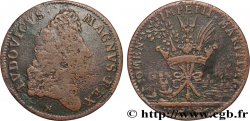
 Full data
Full data
